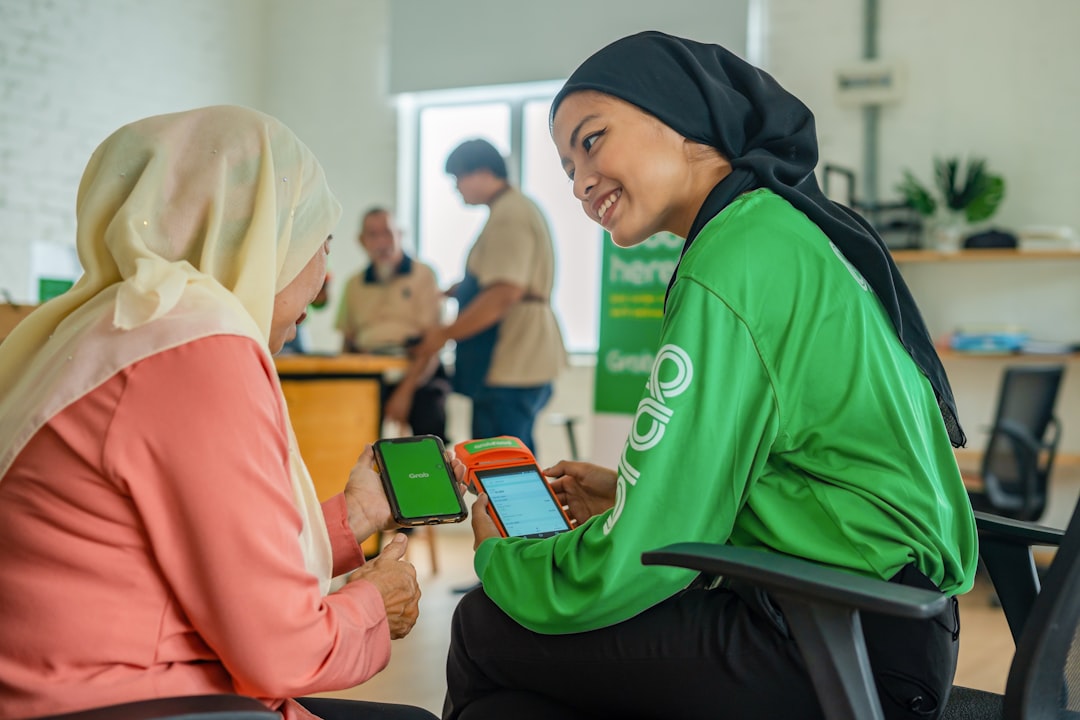In our hyper-connected world, digital devices have become indispensable tools for work, communication, and entertainment. Yet, the constant barrage of notifications, endless scrolling, and the pressure to stay “always on” can take a significant toll on our mental and physical well-being. This blog post delves into the transformative power of a digital detox – a conscious effort to reduce or eliminate screen time and reconnect with the real world.
Did you know that the average adult spends over 6 hours and 58 minutes per day looking at a screen, according to a 2024 report by DataReportal? This pervasive screen time can lead to issues like digital eye strain, sleep disturbances, increased anxiety, and a diminished sense of presence. By embarking on a digital detox, you can reclaim your time, improve your focus, enhance your relationships, and boost your overall well-being. This guide will walk you through the “why,” “how,” and “what next” of a successful digital detox, offering practical tips and insights to help you achieve a healthier balance with technology.
Why Embrace a Digital Detox? Reclaiming Your Well-being
The continuous engagement with digital devices, while offering convenience, often comes at a cost to our health. Understanding these impacts is the first step towards recognizing the need for a break. A digital detox isn’t about abandoning technology forever, but rather about creating a healthier relationship with it.
The Mental and Emotional Toll of Constant Connectivity
Excessive screen time is linked to increased levels of stress, anxiety, and even depression. The constant comparison on social media can foster feelings of inadequacy and FOMO (Fear Of Missing Out). Moreover, the blue light emitted from screens can disrupt our circadian rhythm, leading to poor sleep quality.
- Reduced Anxiety: Stepping away from the digital noise can significantly lower stress levels.
- Improved Focus: Without constant distractions, your ability to concentrate on tasks and conversations improves dramatically.
- Enhanced Mood: Engaging in real-world activities and social interactions can boost your mood and overall happiness.
Physical Benefits of Unplugging
Beyond mental health, a digital detox offers tangible physical benefits. Reducing screen time can alleviate digital eye strain, headaches, and neck pain often associated with prolonged device use. It also encourages more physical activity and better sleep patterns.
A study published in the journal Computers in Human Behavior in 2020 found that reducing social media use by just 30 minutes a day significantly improved well-being and reduced feelings of loneliness and depression among participants. This highlights the profound impact even small changes can have.

Preparing for Your Digital Detox Journey
A successful digital detox requires thoughtful preparation. It’s not just about turning off your phone; it’s about setting yourself up for success and managing expectations. Consider your goals and how you’ll achieve them.
Setting Clear Goals and Boundaries
Before you begin, define what a “digital detox” means for you. Will it be a full weekend unplugged, or simply reducing social media use for a week? Clearly outline which devices and apps are off-limits and for how long. Communicate these boundaries to family, friends, and colleagues to manage their expectations.
- Identify Your “Why”: What do you hope to gain? Better sleep, more presence, reduced stress?
- Choose Your Duration: A few hours, a day, a weekend, or longer? Start small if you’re new to this.
- Define “Off-Limits”: Is it all screens, or just social media? Be specific.
Practical Pre-Detox Steps
To minimize disruption, handle essential tasks before you unplug. This includes informing important contacts, setting up auto-replies, and downloading any offline content you might need (e.g., maps, books, music). Prepare alternative activities to fill the void left by your devices.
“The best way to predict the future is to create it. The best way to manage your digital life is to intentionally design it.”
Implementing Your Digital Detox: Practical Strategies
Once prepared, it’s time to put your plan into action. There are various approaches to a digital detox, and the best one depends on your lifestyle and goals. Consistency is key, even if you start with small steps.
Gradual Reduction vs. Cold Turkey
Some people prefer a “cold turkey” approach, completely disconnecting for a set period. Others find a gradual reduction more sustainable, slowly cutting down on specific apps or screen times. Both methods can be effective; choose what feels right for you.
Tip: Start by identifying your “time sinks” – the apps or activities that consume most of your digital time. Focus on reducing these first.
Creating Screen-Free Zones and Times
Designate specific areas or times in your day as completely screen-free. This could be your bedroom, the dining table, or the first hour after waking up and the last hour before bed. These boundaries help retrain your brain to seek non-digital engagement.
- Bedroom Ban: Keep all devices out of the bedroom to improve sleep hygiene.
- Mealtime Mindfulness: Enjoy meals without distractions, fostering better digestion and conversation.
- Morning/Evening Rituals: Replace scrolling with reading, meditation, or light exercise.

Navigating Challenges and Sustaining Momentum
It’s natural to encounter challenges during a digital detox, especially if you’re accustomed to constant connectivity. Withdrawal symptoms like boredom, restlessness, or even phantom vibrations are common. Recognizing these challenges and having strategies to overcome them is crucial.
Dealing with Digital Withdrawal and Boredom
When you remove the instant gratification of screens, boredom can set in. This is an opportunity to rediscover hobbies, engage in creative pursuits, or simply enjoy quiet reflection. Plan engaging offline activities to fill the void.
Consider activities such as:
- Reading physical books
- Spending time in nature
- Engaging in face-to-face conversations
- Learning a new skill or hobby
Learning from Slip-Ups and Staying Committed
Don’t view a slip-up as a failure. It’s a learning opportunity. Analyze what triggered the relapse and adjust your strategy. The goal is progress, not perfection. Remind yourself of your “why” and the benefits you’ve already experienced.
“The average person checks their phone 144 times a day,” according to a 2023 study by Reviews.org. This habit is deeply ingrained, making a detox a significant challenge but also a highly rewarding one.
Beyond the Detox: Cultivating Mindful Tech Use
A digital detox isn’t just a temporary break; it’s a stepping stone towards a more balanced and intentional relationship with technology. The insights gained during your detox can help you establish sustainable habits for mindful tech use in the long run.
Integrating New Habits into Daily Life
After your detox, gradually reintroduce technology with newfound awareness. Keep some of your screen-free zones or times. Use app timers, turn off non-essential notifications, and be deliberate about when and why you pick up your devices. Prioritize real-world interactions and activities.
The Long-Term Benefits of Digital Balance
Embracing mindful tech use can lead to lasting improvements in your well-being. You might find yourself sleeping better, feeling less stressed, having deeper conversations, and experiencing a greater sense of presence in your daily life. It’s about using technology as a tool, not letting it control you.
For more insights into the benefits of disconnecting, explore this article from a trusted health resource: The Benefits of a Digital Detox. This resource provides a comprehensive overview of how reducing screen time can positively impact your health.

Digital Detox Benefits: A Quick Glance
Here’s a summary of the key benefits you can expect from a successful digital detox and mindful tech integration:
| Aspect | Before Detox (Typical) | After Detox (Potential) |
|---|---|---|
| Sleep Quality | Disrupted, difficulty falling asleep due to blue light. | Improved, deeper, more restorative sleep. |
| Focus & Productivity | Fragmented attention, constant distractions. | Enhanced concentration, increased efficiency. |
| Mental Well-being | Increased stress, anxiety, FOMO, comparison. | Reduced stress, greater calm, improved mood. |
| Relationships | Less present in face-to-face interactions. | Deeper connections, more meaningful conversations. |
| Leisure Time | Passive consumption of digital content. | Active engagement in hobbies, nature, creativity. |
Conclusion: Embrace a Balanced Digital Life
Embarking on a digital detox is a powerful step towards reclaiming your well-being in an increasingly digital world. From improving sleep and focus to reducing anxiety and fostering deeper connections, the benefits are profound and far-reaching. It’s not about abandoning technology, but about using it intentionally and mindfully.
We encourage you to take the challenge, even if it’s just for a few hours. Start small, observe the changes, and gradually integrate more mindful tech habits into your daily routine. Your mind and body will thank you for the break and the renewed sense of presence.
Ready to transform your relationship with technology? What’s one small step you can take today to begin your digital detox journey?
Further Reading:
- Pew Research Center: Social Media and Well-Being: A Review of the Evidence (2020) – Provides a broad overview of research on social media’s impact.
- Sleep Foundation: How Blue Light Affects Sleep – Explains the science behind screen light and sleep disruption.
